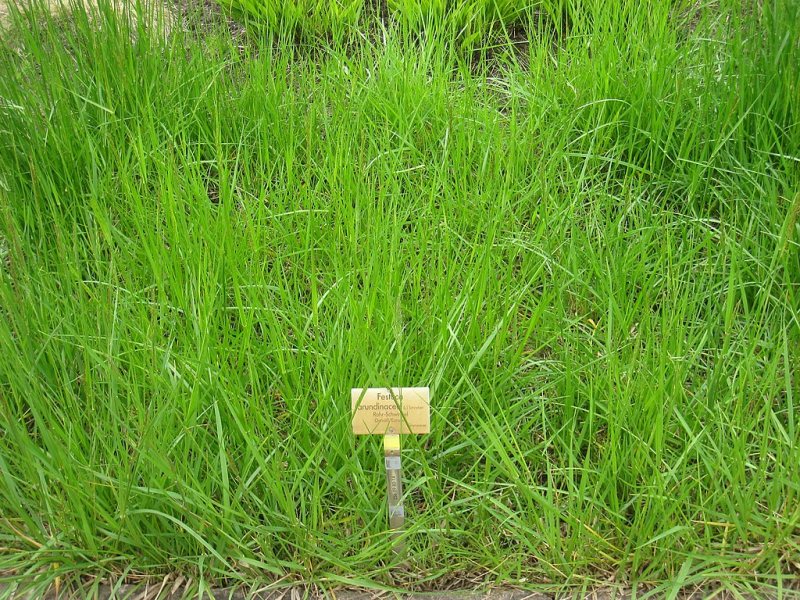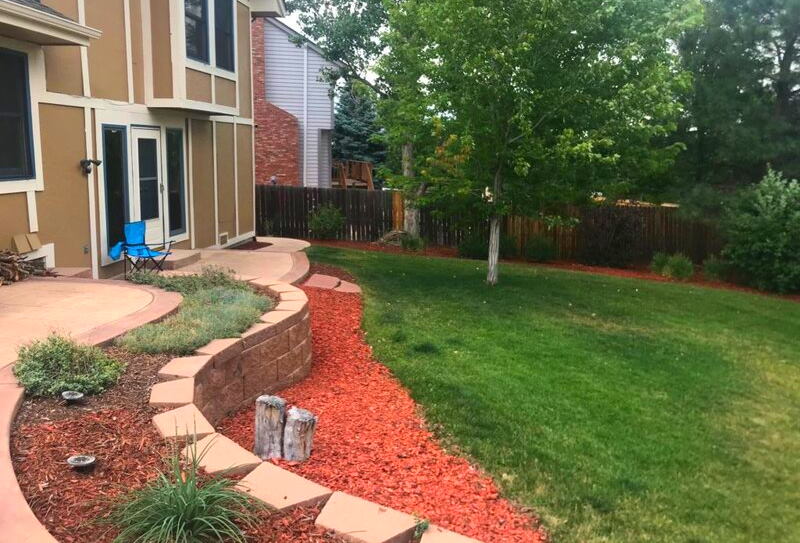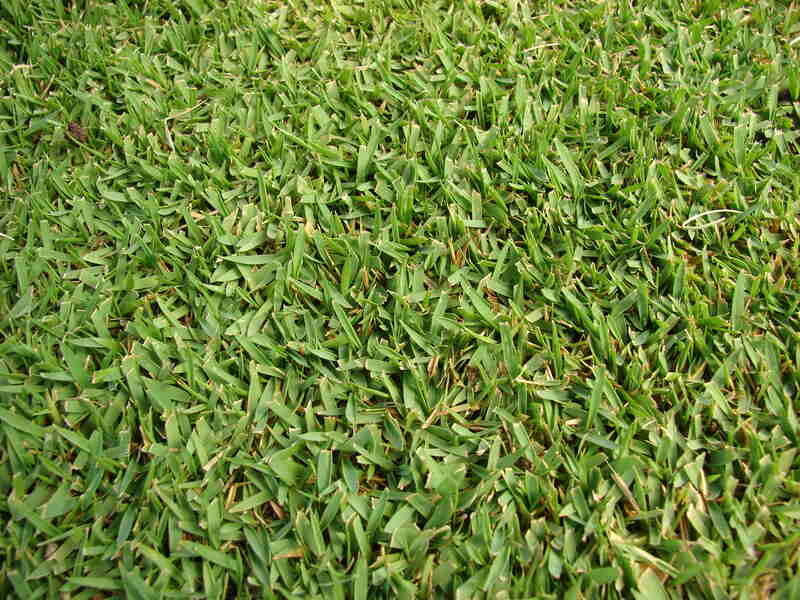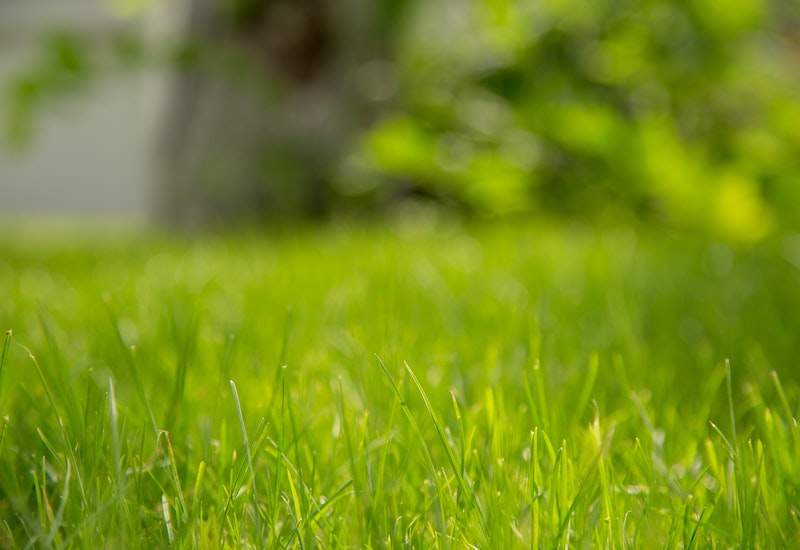6 Best Grass Types for Central Virginia
BY JEFFERY KEUSSEYAN | APRIL 30TH, 2023 | CENTRAL VIRGINIA, LAWN CAREHome to the state capital, Central Virginia is a historic region with plenty to offer for its nature-loving residents. You can enjoy long, refreshing walks in Powhatan State Park and cherish everything that mother nature has to offer. But every once in a while, you just feel like sluggin’ it in your backyard. When you choose the best grass types for Central Virginia, you can transform that grim-looking turf into a lush green lawn.
In this article, we will cover
- FAQ About Central Virginia Grass Types
- Choose Grass and Plant Varieties for Your Central Virginia Landscape
Warm-Season vs. Cool-Season Grasses
Warm-season grasses thrive when temperatures range from 80 to 95 degrees Fahrenheit. They actively grow in late spring and summer, entering dormancy as temperatures drop in winter. These turfgrasses have low frost-tolerance, enjoy high temperatures, and require less water than cool-season grasses. They include bermudagrass, Zoysiagrass, centipedegrass, and St. Augustinegrass.
On the other hand, cool-season grasses thrive when temperatures range from 65 to 75 degrees Fahrenheit. They tolerate frost and lower temperatures, actively growing in spring and fall. Cool-season turfgrasses include tall fescue, creeping red fescue, Kentucky bluegrass, and perennial ryegrass.
Best Grass Types for Central Virginia
Central Virginia lies in USDA plant hardiness zone 7a, though some parts of Richmond and Chesterfield are in 7b. When it comes to choosing the right turfgrass, the state’s location in the transition zone is a far more decisive factor. The grasses mentioned below are suitable for Central Virginia, and should be able to thrive under the right conditions.
1. Tall Fescue

Photo Credit: Daderot / Wikimedia Commons / Public domain
Tall fescue is a perennial, bunch-type grass that can adapt to a wide variety of soils. It withstands drought conditions and hot summers better than other cool-season turfgrasses. Tall fescue performs best in full sun, but is also known for its moderate shade-tolerance.
To get the best out of this cool-season grass, overseeding is recommended to maintain a dense lawn and minimize weed competition. With its notable versatility, tall fescue is a great choice for Central Virginia homeowners.
Classification: Cool-season grass
Spreads by: Produces short rhizomes but has a bunch-type growth habit
Shade tolerance: Moderate
Drought tolerance: Moderate to High
Foot traffic tolerance: Moderate
Maintenance needs: Frequent mowing. Does not produce significant thatch.
Mowing height: Set mowing height to 2 inches when grass reaches 3 inches tall.
Potential for disease: Tolerant of most diseases when properly maintained.
Soil pH: 5.5-6.5
Soil type: Adapted to a wide range of soil conditions, but prefers fertile clay soils with good drainage.
2. Perennial Ryegrass

Photo Credit: Dr Mary Gillham Archive Project / Flickr / CC BY 2.0
Perennial ryegrass is vital for cool-season grass seed mixes in transition zones, including Virginia. It grows well in early spring and fall, but becomes dormant during the summer. Perennial ryegrass is able to survive severe climates, though Virginia is not prone to such conditions. While it can tolerate lightly shaded lawns, it prefers full sun.
This perennial turfgrass is used to overseed warm-season grasses to extend the lawn’s winter green color.
Classification: Cool-season grass
Spreads by: Has a bunch-type growth habit
Shade tolerance: Low
Drought tolerance: Low
Foot traffic tolerance: High
Maintenance needs: Moderate mowing and fertilization requirements. Thatch is not significant.
Mowing height: Set mowing height to 1.5 to 2.5 inches
Potential for disease: High. Common diseases include gray leaf spot, red thread, and leaf spot/melting-out.
Soil pH: Can grow in soils with a pH between 5 and 8, but prefers between 6 and 7.
Soil type: Prefers good drainage and fertility, but can tolerate some poor drainage.
3. Kentucky Bluegrass

Photo Credit: Brenda Ryan / Wikilawn
Kentucky bluegrass is another great choice for a Central Virginia lawn. It spreads by both rhizomes and tillers, forming a dense sod. New shoots are primarily produced in the spring and late summer. However, new shoots and leaves are produced year-round in the transition zone. This grass type has good drought tolerance, but little to no shade tolerance. For shady lawns, fine fescue might be a better choice.
Kentucky bluegrass can tolerate heavy foot traffic, making it a great choice for families who enjoy playing Cornhole.
Classification: Cool-season grass
Spreads by: Rhizomes
Shade tolerance: Low
Drought tolerance: Moderate
Foot traffic tolerance: Moderate
Maintenance needs: Moderate mowing frequency and high fertilization needs.
Mowing height: Set mowing height between 2.5 and 3.5 inches.
Potential for disease: Moderate to high; prone to several diseases, such as dollar spot, leaf spot, necrotic ring spot, summer patch, and stripe smut.
Soil pH: 6-7.5
Soil type: Performs best in well-drained, heavy soils with high fertility.
4. Fine Fescue
Fine fescue is a bunch-type grass with several species, including creeping red and chewings. Its needle-like leaves are quite unique and distinctive. It is a slow-growing grass that does not tolerate poorly-drained soils. Seed mixtures of fine fescue and Kentucky bluegrass are commonly found in garden centers across the state.
Fine fescue is the most shade-tolerant cool-season turfgrass, with all species able to thrive in our Central Virginia climate.
Classification: Cool-season grass
Spreads by: Creeping red fescue spreads by rhizomes, while other fine fescues are bunch-type grasses, such as Chewings, hard, and sheep fescues.
Shade tolerance: Moderate to High, depending on species
Drought tolerance: Moderate to High, depending on species
Foot traffic tolerance: Low to Moderate, depending on species
Maintenance needs: Low fertilizer and mowing needs
Mowing height: Set mowing height between 2.5 and 4 inches, depending on species.
Potential for disease: Moderate. Common diseases include red thread, leaf spot, dollar spot, summer patch, and powdery mildew.
Soil pH: 6-6.5
Soil type: Will not perform well in wet soil conditions. Prefers drier soils and tolerates a wide range of soil types and fertility.
5. Zoysiagrass

Photo Credit: Forest & Kim Starr / Wikimedia Commons / CC BY 3.0
Zoysiagrass is one of the most cold-tolerant warm-season grasses. It produces a dense, cushiony turf when established. It can withstand wear and tear, and requires less water than most cool-season grasses. Its thick growth helps it control crabgrass and other summer weeds. Perennial ryegrass can be used to overseed zoysia for a green winter color.
During the hot summer months, zoysiagrass will boost your lawn’s visual appeal with an attractive green color. If you enjoy lawn games and outdoor activities, this warm-season turfgrass won’t let you down.
Classification: Warm-season grass
Spreads by: Stolons and rhizomes
Shade tolerance: Moderate
Drought tolerance: Moderate to High
Foot traffic tolerance: High, but recovers slowly from damage
Maintenance needs: Low nitrogen fertilization requirements, although, it’s prone to thatch build-up.
Mowing height: Set mowing height between 1 and 2 inches.
Potential for disease: Good disease tolerance overall
Soil pH: 6-6.5
Soil type: Well-draining, some cultivars more tolerant of a wide range of soils than others
6. Bermudagrass

Photo Credit: Pexels
Bermudagrass is a warm-season grass that spreads by both stolons and rhizomes. It has excellent drought, wear, and salt tolerance. Bermudagrass enters dormancy in early winter, which is when the leaves turn straw-brown in color. Due to its rapid growth rate, this turfgrass may develop excessive thatch. Fortunately, it is capable of recovering from injury very quickly.
Bermudagrass will perform very poorly in lawns with constant shade. Despite that, it is well-adapted to most soils and can be used in athletic fields and golf courses.
Classification: Warm-season grass
Spreads by: Stolons and rhizomes
Shade tolerance: Low; thrives in full sun
Drought tolerance: High
Foot traffic tolerance: High
Maintenance needs: Needs frequent mowing due to fast growth rate; develops thatch easily; needs regular fertilization
Mowing height: Set the mowing height between 0.5 and 1.5 inches for hybrid Bermudagrass cultivars. Mow common Bermudagrass down to 1.5 to 2.5 inches.
Potential for disease: Good resistance to disease, although diseases are common; low resistance to insects
Soil pH: 6-6.5
Soil type: Tolerates most soil types
FAQ About Central Virginia Grass Types
If your lawn regularly endures high traffic, a mixture of turf-type tall fescue and Kentucky bluegrass is an excellent choice. Kentucky bluegrass has a spreading root system that allows your turf to quickly recover from excessive traffic or drought damage. As mentioned previously, both grass types are suitable for Central Virginia’s climate.
Centipedegrass is a warm-season grass that can only be grown in the Tidewater area. Additionally, this turfgrass cannot withstand heavy foot traffic, so your lawn would be much better off with zoysia or Kentucky bluegrass.
Not only can cogongrass be found in Central Virginia, but throughout the entire state. It is an aggressive and invasive perennial grass that creates dense groundcovers, displacing native plants and some ground-nesting animals.
You can control this invasive species by mowing, grazing, or burning. Unfortunately, none of these methods are entirely effective. To completely remove this plant from your back or front yard, the rhizomes must be destroyed.
Another way to deal with this problem is herbicide control. Imazapyr and glyphosate are two active ingredients that have proven successful in dealing with this non-native plant.
The best grass types for Northern Virginia include:
● Tall fescue
● Kentucky bluegrass
● Perennial ryegrass
● Fine fescue
● Zoysiagrass
● Bermudagrass
Choose Grass and Plant Varieties for Your Central Virginia Landscape
With 6 grass types to choose from, the decision-making process might get slightly difficult. You should consider your lawn’s soil type, sun exposure levels, and activity level to help you choose the right grass for your turf. Add some more research to your thinking, and you’ll get to plant some native trees or wildflowers to help boost the local ecosystem.
But why stop there when you can create the ultimate outdoor space? Consider low-maintenance landscaping ideas for your Virginia lawn, including mulching and hardscaping.
Looking for a Virginia lawn care pro near you? We have trusted lawn care pros in Powhatan, Mechanicsville, Glen Allen, and many more cities across the state.
Main Image Credit: Karen Blaha / Wikimedia Commons / CC BY-SA 2.0